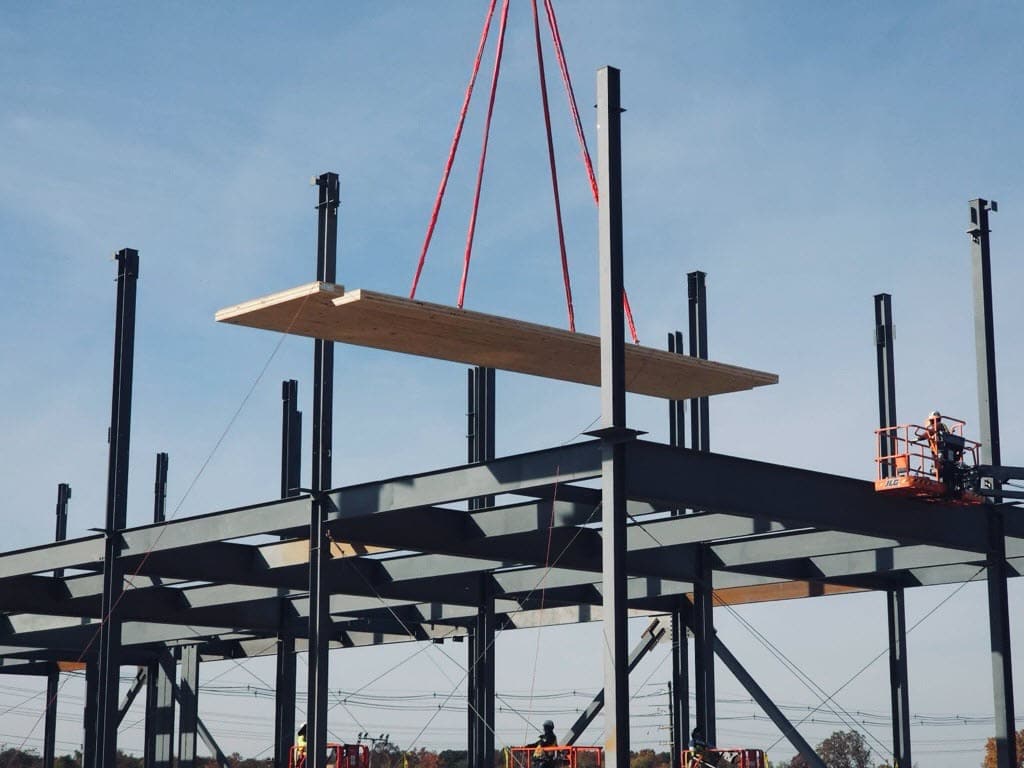Microsoft has taken an innovative step in building its data centers by incorporating wood as a primary material, in an effort to significantly reduce the carbon emissions associated with conventional construction materials. The company is experimenting with engineered wood, specifically cross-laminated timber (CLT), to partially replace the use of steel and concrete in two new data centers located in Northern Virginia. According to Microsoft, this strategy could reduce the carbon footprint embedded in these buildings by as much as 35% compared to steel constructions and by 65% compared to the use of precast concrete.
The cross-laminated timber used in this project is notable for its lightweight, strength, and fire insulation capabilities, in addition to being a naturally low-carbon material. The structure of the data centers will remain hybrid, combining wood, steel, and concrete, which will maintain high levels of safety and durability in the buildings. This shift in construction materials is part of Microsoft’s sustainability commitments, which in 2020 announced its ambitious goal to become a “carbon negative” company by 2030 and to eliminate all its historical carbon emissions by 2050.
A Comprehensive Approach to Reduce Emissions
The transition to using wood as a construction material in its data centers is just one of Microsoft’s multiple strategies to reduce its carbon emissions. The company has also begun implementing low-carbon requirements in contracts with its suppliers and is investing in sustainable construction materials, such as low-emission steel and concrete. In fact, Microsoft has allocated $761 million from its Climate Innovation Fund to technologies aimed at transforming the climate solutions market.
Richard Hage, head of global engineering strategy for data centers at Microsoft, explained that this approach also seeks to incentivize suppliers to adopt more sustainable practices and to reduce the carbon footprint of the materials they provide. The investment in technologies like hydrogen-produced steel and concretes that capture carbon is part of the company’s effort to drive the development and availability of low-emission materials in the market.
The Use of Wood and Its Impact on Construction
Microsoft is no stranger to utilizing engineered wood in its construction projects. In 2021, the company built its headquarters in Silicon Valley using CLT, becoming one of the first large tech facilities in the U.S. to adopt this technique. CLT, commonly made from fir, pine, or Douglas fir, is stronger, lighter, and more stable than traditional wood, as it is produced by gluing several layers of wood in alternating directions and then pressing them into a solid panel.
Cross-laminated timber, in addition to being fire-resistant by developing a layer of char that acts as insulation, is prefabricated off-site, which allows for reduced installation time and increased safety in the process. Although CLT is still more expensive compared to traditional wood, its use in large projects like data centers can be economically viable due to the reduction in construction time and the lower need for specialized labor.
Challenges and Risks of Sustainable Construction
However, the use of wood in the construction of data centers is not without challenges. One of the main risks is the potential for fires, a topic that has been debated in the industry. The unfortunate fire at an OVHcloud data center in France, where wood was used in certain areas of the structure, underscores the need to ensure fire safety. The implementation of more sustainable construction technologies is promising, but it is essential for Microsoft and other tech leaders to consider all safety factors to avoid such incidents in the future.
With this commitment to engineered wood and other sustainability initiatives, Microsoft hopes to set precedents in the industry and contribute to a more sustainable global market for construction.
source: Microsoft

